By drips and weeps over thousands if not millions of years, beauty is created underground. Here in the subterranean world the moist air and mineral-rich water create castles, not in the sky, but in the caves of the National Park System.
There are sparkling white nodules, wafer-thin balloons, mineral straws, and slabs of bacon (well, at least it looks like bacon). These are the speleothems; the decorations of the underworld. They are fashioned over time by minerals deposited from water droplets dangling from ceilings, splashing to the floor, or simply carried on air currents and accumulated by chance in frost-like forms.
“Every drip of water you hear today is creating something else,” Ranger Ken says just before he turns the lights out on us in one of the chambers along Jewel Cave National Monument’s Scenic Tour. “As you look around, you can see the impact of every drip of water.”
While these creations are lost in the total darkness that is the norm in caves, they come shimmering to life for us when some light shines on them. When the ranger turns the lights back on, orange, yellow, and white “soda straws” point down at me from the ceiling. Across the cave, dark brown flowstone coats a rock shelf, appearing like melting chocolate ice cream, or icing in search of a cake.
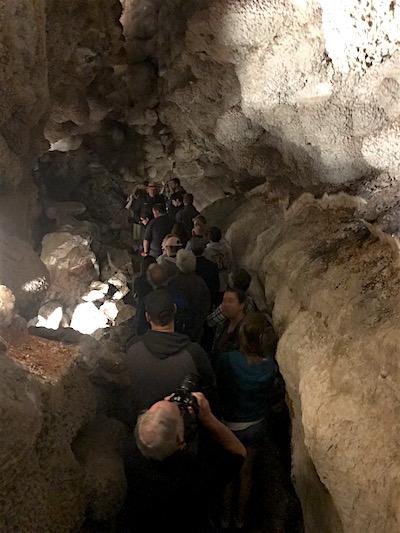
The Scenic Tour, the most popular of Jewel Cave’s tours, shows off cave popcorn, flowstones, soda straws, and cave bacon while providing great interpretation of the cave / Kurt Repanshek
Before I joined the 90-minute public cave tour, Mike Wiles, the national monument’s resident geologist and master caver, took me along the Scenic Tour route to better explain the geology and the work being done to protect the cave and its formations.
“We are inside a geode,” Wiles told me, referring to the spherical rock nodules that, when cracked open, often are filled with colorful crystal displays. And that makes sense. In a passage not far from the Target Room the walls are covered with countless nodules of what’s called cave popcorn.
Geologically speaking, the nodules are “corallites,” formed by the deposition of calcium carbonate. A little further down the path, we encounter a quarter- to half-inch-thin 20-foot-long vertical slab of cave bacon. Illuminated from behind, you can see the striking stripes of color that do indeed make this formation resemble an enormous slice of bacon.
Frank and Albert Michaud thought the formations they spied in 1900 through the cave's historic entrance might bring them riches, and filed the “Jewel Tunnel Lode” mining claim. While the calcite creations were not valuable in their own right, the brothers turned the cave into a tourist attraction. They were ahead of their time, though; tourism of the cave didn’t take off as they envisioned. In 1908 President Theodore Roosevelt designated it as a national monument, and soon thereafter the federal government bought out the brothers and placed Jewel Cave under control of the U.S. Forest Service, which turned it over to the National Park Service in 1933.
Across the park system, there are many more caves than you might imagine. From Mammoth Cave in Kentucky, Carlsbad Caverns in New Mexico and Timpanogos in Utah, to Sequoia National Park’s Crystal Cave in California, and Oregon Caves in, well, Oregon, these voids are vast geology lessons that hold you in wonder of the planet.
How did they form? How large are they? Will they collapse on me? Does anything live in these cool, dark places?

New passages in the two caves are sought, explains Jewel Cave’s Mike Wiles, because “you can’t take care of things you don’t know.”/ ©Dave Bunnell, Under Earth Images
The answers to these questions can be just as varied and complex as the caves themselves. Though Jewel Cave National Monument and Wind Cave National Park are separated by fewer than 20 miles in South Dakota’s Black Hills, to the casual observer they may as well be 1,000 miles apart.
Jewel Cave practically shimmers with the world’s greatest concentration of bright white dogtooth spar, colorful soda straws, flowstone, and cave bacon. The main speleothems along the Natural Entrance Tour at Wind Cave are potato-chip-fragile honeycomb joints known as boxwork that were created when the surrounding limestone and dolomite weathered away. Nowhere else in the world, it’s said, can you find such an assemblage of boxwork.
It took tens of millions of years for these two caves to form. They were created not by rushing rivers of surface water that found a crack in the Madison Limestone formation (known to locals as Pahasapa Limestone), but rather by the shifting currents of ground water that dissolved away the limestone.
“At all times, the cave is completely filled with water, so it’s all happening under the water table by circulating water,” Wiles said in describing the setting tens of millions of years ago. “As far as we know at this point, we never had a stream flowing through the cave. It was underwater as it was being formed, and then it got to the point where the water stopped flowing, or circulating, and then drained away slowly.”
As the water drained, settling out was calcium carbonate, which created the wonders that draw hundreds of thousands of visitors to these two caves each year.
As for the differences in the caves’ speleothems, Wiles said, that likely had to do with the limestone bed at Wind Cave being thinner, sandier, and more fractured than the one in which Jewel Cave formed.

Found far from the public routes through the cave are curious, bush-like growths called helictites that likely were coated with calcium carbonate when water filled the cave / NPS
I had travelled to South Dakota in late May to explore these two cave systems. Well, as much as I was allowed to and was capable of handling. More physically fit volunteer spelunkers with much more caving experience head down into these systems, usually for four days at a time. They shuffle along on elbows and knees while pushing gear ahead of them, beams from their headlamps bouncing off the rock walls, floors, and ceilings.
These are the few who “push” the length of these caves by finding, and measuring, new passages. While Jewel Cave is recognized as the world’s third longest cave (with nearly 200 miles mapped), Wind Cave ranks sixth, with 148 miles charted as of June 2018.
“Right now, it’s kind of all directions,” Marc Ohms, a physical scientist at Wind Cave, replied when asked where these volunteers are exploring. “We call it the edge of the cave, which is on all corners, and we’re trying to find a way to break out of the known footprint of the cave. We haven’t been able to do that in a long time. So we’re pushing the edges of the known footprint to see if we can get through.”
There is a possibility that Wind Cave and Jewel Cave are connected. “We know there’s enough volume for the two caves to be connected,” said Wiles. “But that doesn’t mean they are.”
For years a German researcher, Andreas Pflitsch, has been using ultrasonic anemometers to measure airflows in and out of both Jewel Cave and Wind Cave. With those measurements and physics – the Ideal Gas Law, specifically -- he calculated the volume of the caves. Those calculations indicate that only about 3 percent of Jewel Cave’s passages have been explored, and only about 10 percent of Wind Cave.

Jewel Cave is the world’s third longest cave, but efforts throughout the year to discover new passages continue to extend its reach / ©Dave Bunnell, Under Earth Images
If so, mapping the entire cave won’t happen any time soon, as volunteers manage to extend the cave’s length by only about 2-3 miles a year, and some passages that allow air to flow would likely be too tight for a crawling human.
What is known from Dr. Pflitsch’s work is that under the right climatic conditions – extreme low pressure – the airflow exiting Wind Cave from a small crevice that betrayed the cave’s existence has reached 70 mph. In 1881 two cowboys, Jesse and Tom Bingham, found the portal while out deer hunting, Since then, the urge to explore the passageways has grown steadily. In Jewel Cave, explorers have also worked to see how far the netherworld extends.
“We’re going where the cave will let us, wherever we can find. I do think there are cave passages that extend in that distance (toward Jewel Cave),” Ohms said. “If we can actually fit through, some day we may actually find out. But right now, the caves are 18 miles, as the crow flies, apart. That sounds close when you’re talking about two cave systems with over 300 miles combined, people say you must be close.
“Wind Cave right now fits under one square mile of land surface,” he pointed out. “And Jewel Cave barely three miles of land surface, so we’re not even close to each other. To get to the far ends of our cave would take about eight hours, and over in Jewel Cave it would take even longer to get to the end. So, physically, we’re going to need more entrances in between if we’re ever going to push that far.”
While the Lakota tribe considers Wind Cave sacred, there has been no evidence that they ever entered it. Europeans didn’t hesitate. In the 1930s, Civilian Conservation Corps crews built the elevators down into the cave, installed electricity, and built stairways by draping tire inner tubes filled with concrete over their shoulders and carrying them deep into the cave for pours.

There is a lot more of Wind Cave than what visitors encounter on the normal tour routes. Cave explorers discover fascinating formations deep within the lower reaches of the cave / ©Dave Bunnell, Under Earth Images
“It took them nine years to finish everything,” Ranger Christine told those on the Natural Entrance Tour I joined the day before visiting Jewel Cave. “All the staircases, and elevators.”
Both caves offer a variety of tours.
At Wind Cave, in addition to the Natural Entrance Tour, you can explore other sections via the Garden of Eden Tour (recommended for those with little time), the Fairgrounds Tour (the most strenuous at Wind Cave, and showing off the most cave features of all the park’s tours), the Candlelight Tour (also strenuous and with some off-trail travel, limited to visitors 8 and older), and the Wild Cave Tour (an adventure for those who don’t mind squirming around on hands, elbows and knees, and over 16 years old).
At Jewel Cave, along with the Scenic Tour that is offered year-round, you can journey into the cave by flickering light on the Historic Lantern Tour, or get a quick sample via the 20-minute Discovery Tour, which takes you into the Target Room.
Which cave is for you? Both. Because they are so close together, and because they offer such different geologic experiences, you’d be disappointed to miss either.
Away from the general public’s cave tours, both Jewel Cave and Wind Cave contain passages that lead to “lakes,” areas where the water table meets the passageways, and odd formations.

Jewel Cave National Monument harbors what is thought to be the world’s greatest collection of dogtooth spar / NPS
“Probably one of the more unique (formations) is called a helectite bush,” said Ohms. “It looks like a bush. It looks like something that was living at one time, and I do think it probably was. I think it was made of bacteria, or maybe algae that was living when the cave was underwater in those sections. And then got covered with calcite.”
While the formations haven’t been studied deeply, yet, Ohms did say they were unique to Wind Cave.
“We haven’t seen them anywhere else in the world. And the tallest one is 6-foot tall, and down to a few inches. So they range quite a bit. But they’re only found in this cave,” he said. “They were formed under the groundwater table in very slow moving water, virtually almost stagnant.”
The next day, while joining Wiles underground at Jewel Cave, we paused in a passage to admire some of the speleothems, and I asked what the point is of seeking new stretches of cave in the two parks.
“The bottom line is curiosity,” he said. “This is a park, where the primary resource is undiscovered. You can’t take care of the things you don’t know about.”

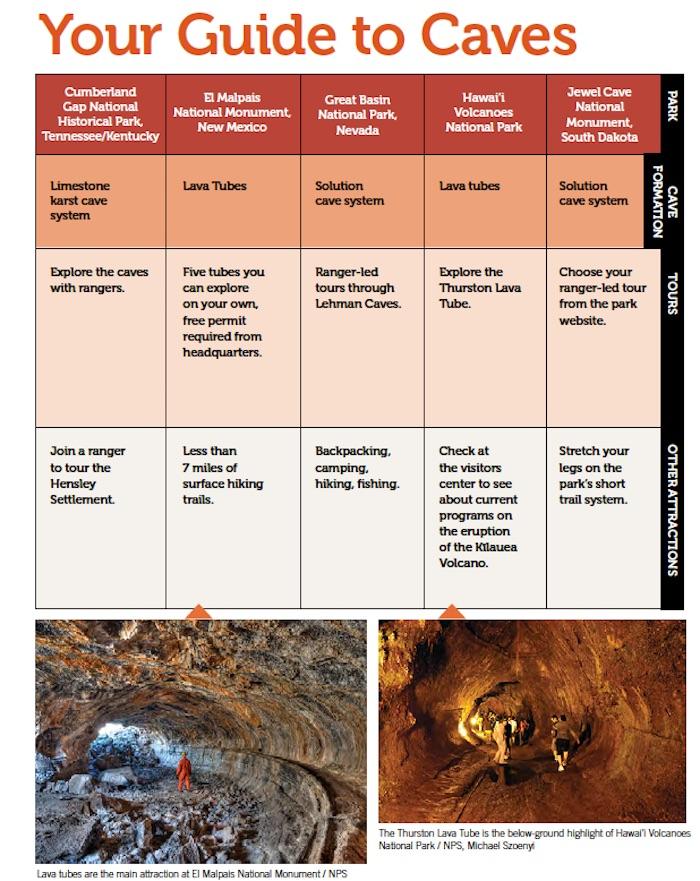
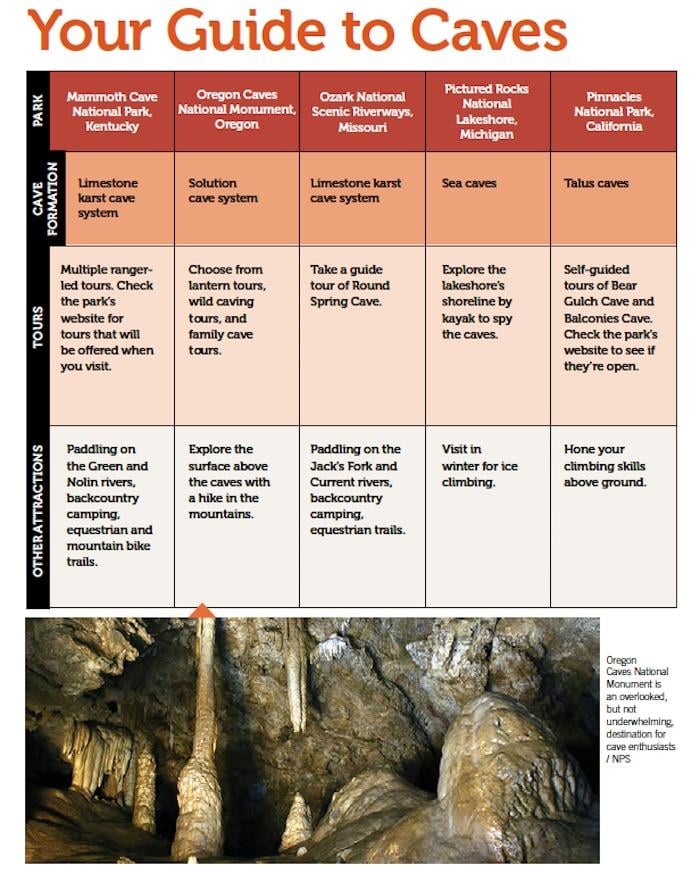


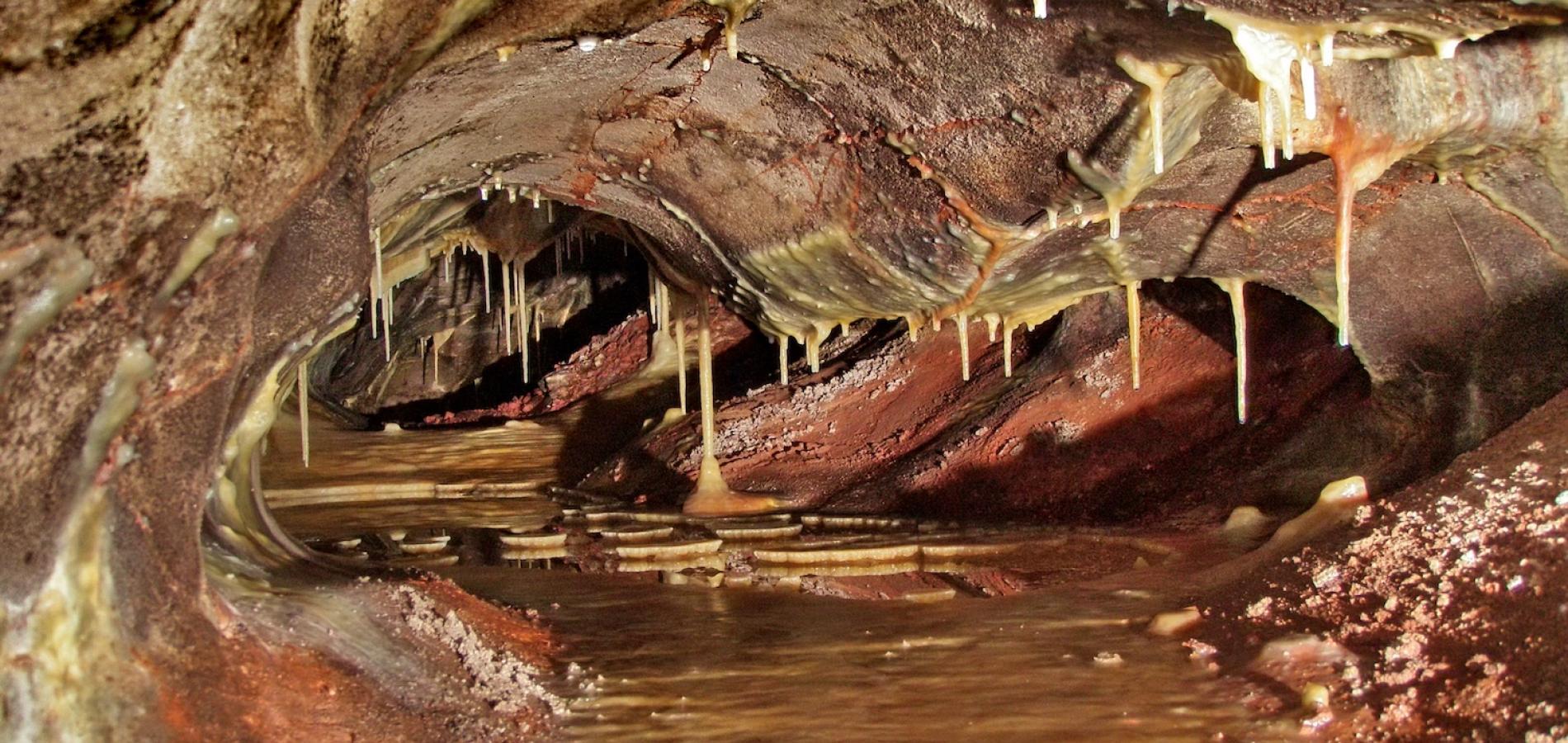



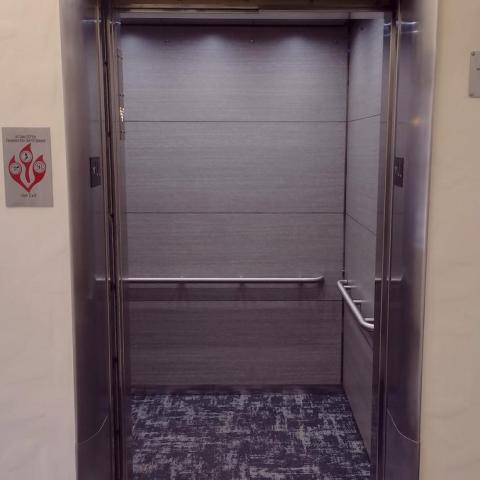
 Support Essential Coverage of Essential Places
Support Essential Coverage of Essential Places







Comments
Nice article! I live near Jewel and Wind Caves in the Black Hills of South Dakota. Friends with people who have explored far beyond the public areas, and have done a little spelunking with them. It's fascinating to hear their stories. The unexplored regions of Jewel Cave are so "far out" they keep hoping to find another entrance somewhere that would shorten the hours-long journey to the presently unmapped areas. It really is another unexplored frontier on this planet!